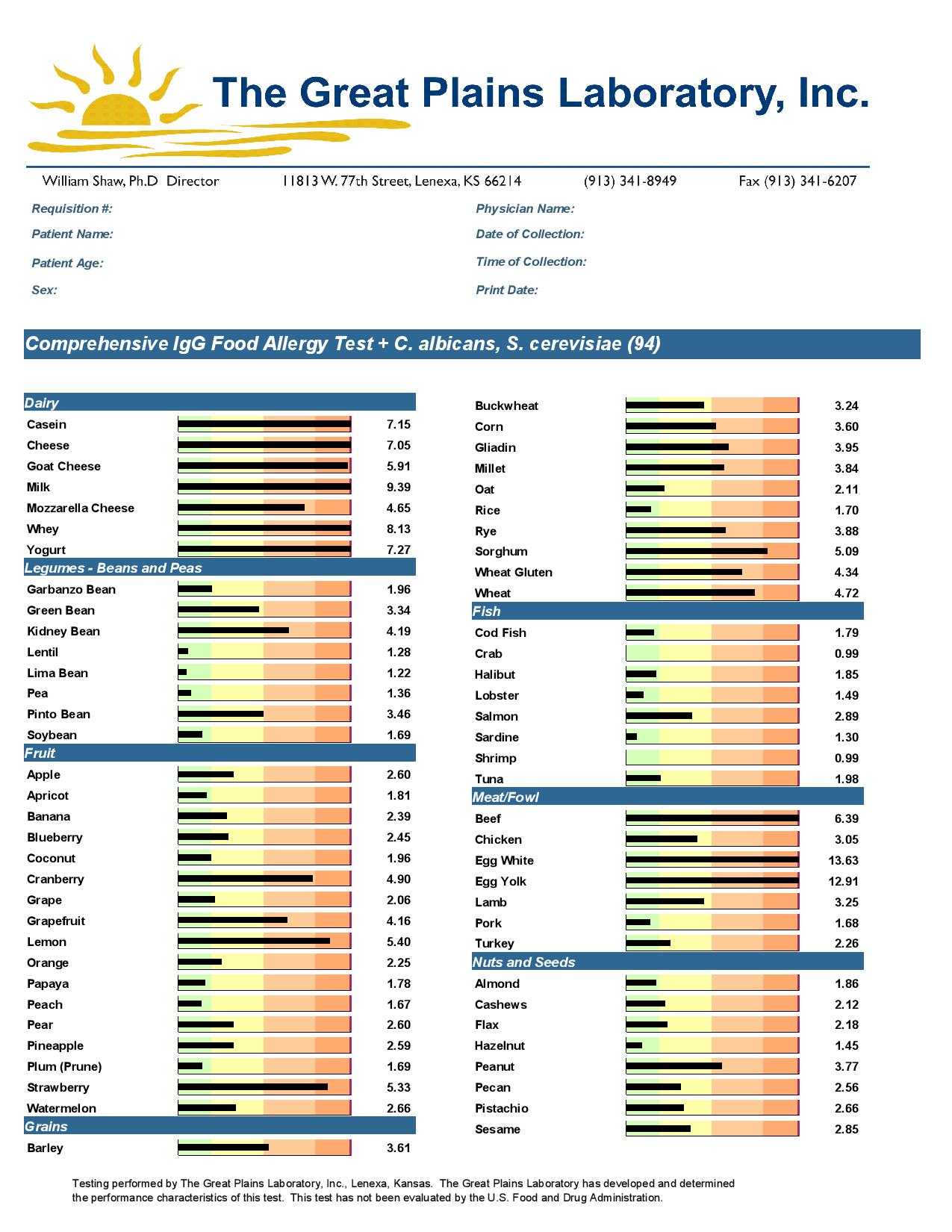Description
Overview
Immunoglobulin G (IgG) food testing is a useful guide for structuring elimination diets for patients with many chronic conditions.
Individuals with neurological, gastrointestinal, movement, and behavioral disorders often suffer from IgG food sensitivities.
People may continue to eat offending foods unaware of their potential adverse effects. Symptoms associated with food
sensitivities may occur hours or days after the offending food was eaten because IgG food antibodies remain for a much longer
time than traditional IgE antibodies. As immunological reactions, IgE food allergy causes the release of histamine, producing
an immediate hypersensitivity reaction, in which symptoms appear within minutes or hours. In contrast, food sensitivity is a
non-IgE allergy characterized by the measurement of IgG antibodies specific to antigenic food proteins. This IgG food allergy
is a delayed hypersensitivity reaction in which symptoms appear anywhere from hours to days after eating the offending
food. Elimination of IgG-positive foods may improve symptoms of irritable bowel syndrome, autism, AD(H)D, cystic fibrosis,
rheumatoid arthritis, and epilepsy, according to numerous clinical studies.1-8 The 93 foods tested for in the IgG Food Allergy
Test w/ Candida include most classes of problem foods that can be eliminated from a patient’s diet. The Great Plains Laboratory
offers a comprehensive Western food panel as well as an Asian panel. The Asian panel includes specific foods common to Asian
cuisine, such as certain spices and twice as many seafood items as the Western panel. Sampling requires at least 2 mL of serum
or 3 dried blood spots.
What is IgG?
IgG is the major antibody found in serum. IgG’s are composed of two fragment antigen binding (Fab) regions
that contain the antigen binding sites and the Fc region, which is responsible for most of the biologic activity
of the antibodies (Figure 1). An antigen is a substance that causes the immune system to produce an antibody
that specifically reacts with it. IgG-mediated reactions to food antigens may be delayed by several hours or
days, whereas IgE food antibody reactions are quite immediate.
Human IgG is separated into four subclasses denoted IgG1, IgG2, IgG3, and IgG4.9
Each subclass varies in
abundance and biological function. IgG1 and IgG3 are predominantly responsible for antibody protection
against reinfection. IgG2 antibodies are opsonic (marking a pathogen for ingestion and destruction) and
develop in response to carbohydrate polysaccharide antigens. IgG4 molecules function as skin-sensitizing
immunoglobulins and are thought to block antibodies produced in response to chronic exposure to antigens.
Clinical Usefulness
The clinical usefulness of IgG food testing was illustrated in an early article published by an otolaryngologist who reported that
the majority of his patients had substantial health improvements after eliminating foods found positive by IgG food allergy
testing10. The study demonstrated a 71% success rate for all symptoms achieving at least a 75% relief. Of particular interest
was the group of patients with chronic, disabling symptoms, unresponsive to other intensive treatments. Symptoms most
commonly improved (75%-100%) on the elimination diets included asthma, coughing, ringing in the ears, chronic fatigue,
headaches, gas, bloating, diarrhea, skin rash and itching, and nasal congestion. The most common IgG food allergies were to
cow’s milk, garlic, mustard, egg yolk, tea, and chocolate. A recent study reported that 93% of non-celiac, gluten-sensitive patients
showed anti-gliadin IgG antibody disappearance after a six-month adherence to a gluten-free diet. The IgG disappearance was
closely related to a significant improvement of both gastrointestinal and extra-intestinal symptoms.11
I




Reviews
There are no reviews yet.